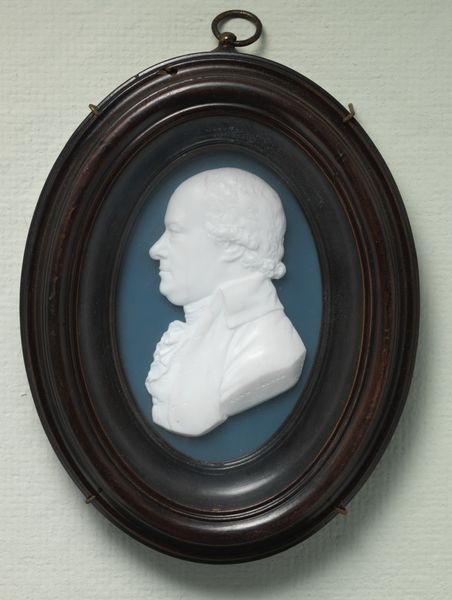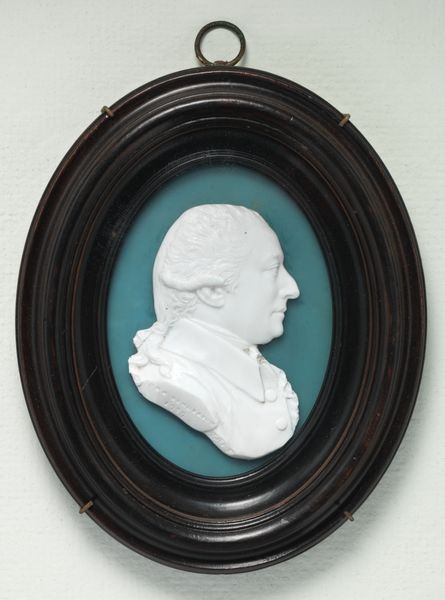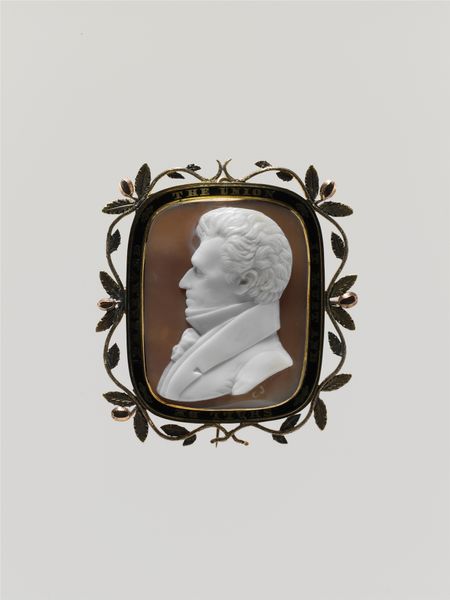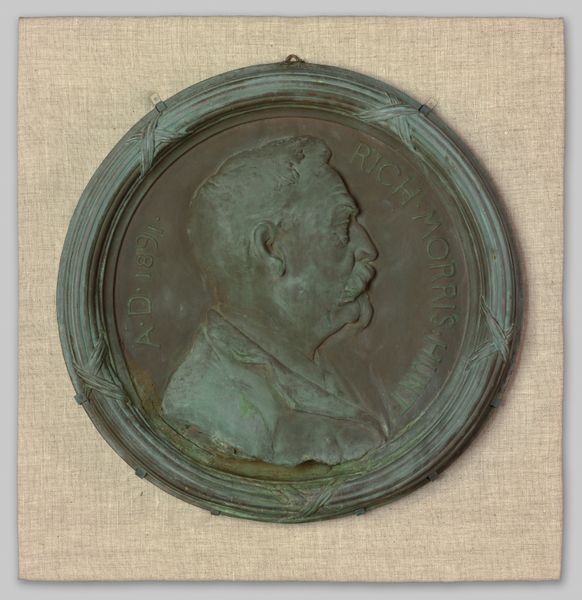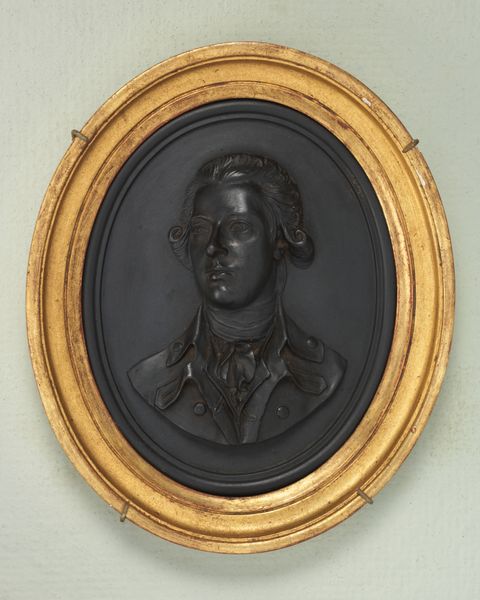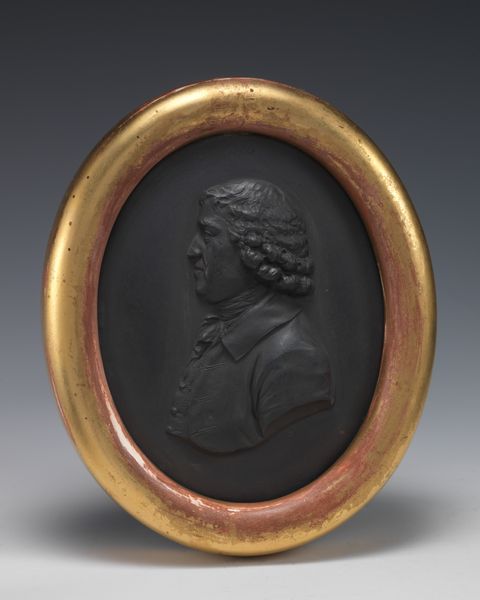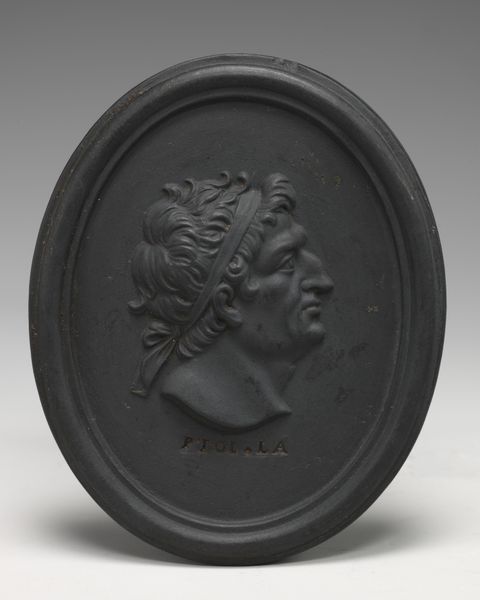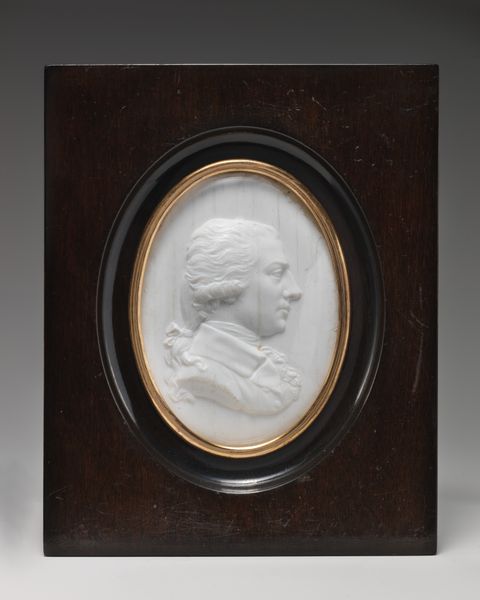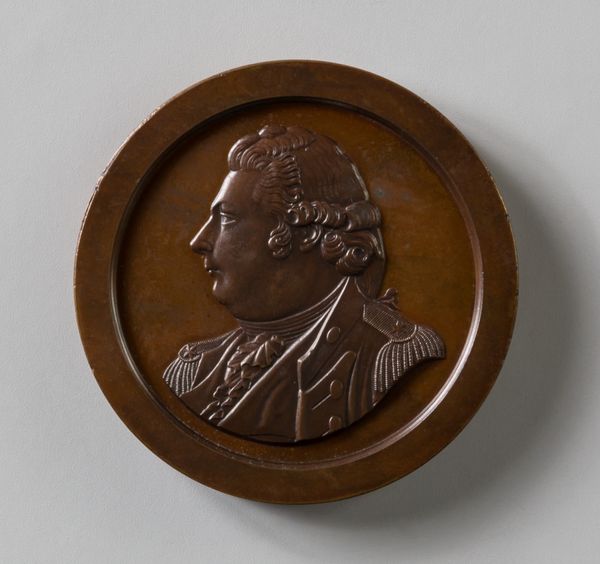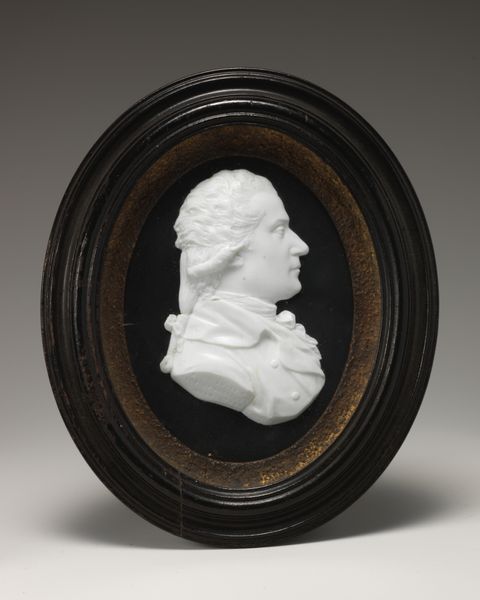
ceramic, sculpture, ivory
#
portrait
#
neoclacissism
#
ceramic
#
sculpture
#
ceramic
#
ivory
#
watercolor
#
profile
Copyright: Rijks Museum: Open Domain
Editor: Here we have a piece called "Portret en profil," dating from somewhere around 1800 to 1910. It's a small, striking profile portrait of a man, crafted from ivory and set against what looks like a ceramic background. What stories do you think it holds? Curator: It's a fascinating image. Ivory itself carries significant weight. In many cultures, particularly during the 18th and 19th centuries, it symbolized status, refinement, and even purity. Do you think that connotation extends to its portrayal of H. Bauer? Editor: That’s interesting. I hadn't considered the ivory itself as a symbol. Does the profile pose also carry any particular significance? Curator: Absolutely. Think of ancient coins, classical sculptures. The profile view evokes ideas of timelessness, authority, and idealization, doesn’t it? What feelings are brought up by the juxtaposition of a crisp silhouette in front of such dark backdrop? Editor: It makes the subject look austere. So much feels carefully chosen to present an image of power or respectability. Were portraits like this commonly commissioned? Curator: Portraits like this served multiple purposes. On the one hand, of course, they could memorialize an individual. But they could also advertise their status, or signal allegiance to certain cultural ideals. Does anything else about this piece stand out to you? Editor: The circular frame. It's very neat and contained, drawing my focus intensely on the subject, limiting all other context to this little symbolic space. Curator: Precisely. This object encapsulates the tension between personal identity and cultural values within its tiny symbolic world. It is the image as message. Editor: I’ll never look at a profile portrait the same way again. The symbols are so embedded in it. Thanks!
Comments
No comments
Be the first to comment and join the conversation on the ultimate creative platform.
